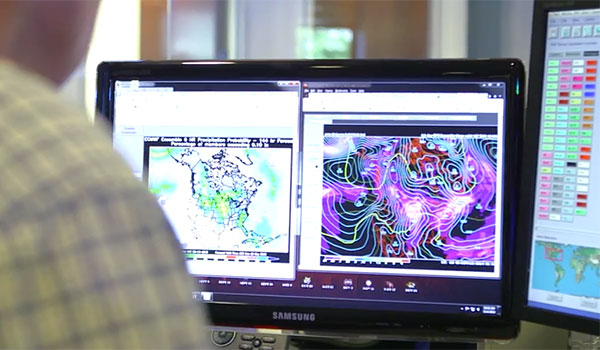IBM on Tuesday announced it will spend US$3 billion over a four-year period on a new Internet of Things unit involving thousands of consultants, developers and research staff. The company intends to establish an IoT Cloud Open Platform for Industries, which will extract data for business intelligence, and set up a Bluemix IoT Zone, which will help leverage that data for app design.
This broader platform will allow IBM to offer many types of customized solutions — to aid businesses and government agencies in partnering with local municipalities around the U.S. for its Smarter Planet, Smarter Cities initiative, for example.
Smarter Cities
One big goal of IBM’s new IoT drive is to help cities better manage resources and compete in a modern, data-centric world. IBM currently is helping communities like Miami-Dade County and Rochester, Minnesota, to use IoT data for water management, crime and traffic analysis, and the design of energy-efficient housing. Other municipal partners include Dublin and Montpellier, France.
The Smarter Cities program helps to show what IBM is uniquely positioned to do with the Internet of Things, noted IBM Distinguished Engineer Sam Adams.
“We have a lot of experience in a lot of different industries,” he told the E-Commerce Times, calling the company’s platform of services an “end-to-end solution” for managing IoT data.
How’s the Weather?
As for its commercial partnerships, one of the biggest new plans in the making aims to help provide better answers to that critical question: What’s the weather going to be like today?
Along with the new IoT unit, IBM announced a partnership with The Weather Company to use more than 100,000 weather sensors, and far greater numbers of IoT sources like phones, cars and airplanes, to get more weather information to businesses when they need it most.
Nor is the weather project the only big commercial contract for IBM clients. Whirlpool uses IBM services for the IoT analysis of maintenance status on some appliances, and various companies like Continental, Pratt & Whitney and Silverhook Powerboats already use these services for getting IoT data out of vehicles.
In any program as broad and comprehensive as IBM’s, said Adams, there will be roadblocks along the way — for example, in dealing with proprietary data formats, or working out which parties will own which data sets.
“In the race to take advantage of the technology, there are a lot of barriers,” he said, noting that IBM already does a lot of “heavy lifting” in serving its clients.
With the IoT, “a lot of what we’ll be doing is pulling the pieces together,” Adams said.
Another challenge will be making IoT data useful in real time, or close to real time, he said, which can be done either by streaming it in real time to a cloud ecosystem, or by analyzing it closer to a device using a cloud gateway, for example.
A New Marketplace
How will this sort of muscular data handling affect businesses and consumers?
There will be advantages and drawbacks, Adams noted. While more use of IoT will provide a cornucopia of new options for both companies and shoppers, some of the issues with the technology will be related to privacy, an area of great importance to IBM.
“We’re very active on that front,” Adams said.
There will be a wealth of positives down the road resulting from new methods of handling IoT data, said Dan Miklovic, principal analyst at LNS Research.
“The IoT is attracting investment from virtually every major hardware and software company today.” he told the E-Commerce Times.
“Businesses stand to benefit from IoT by improving the availability of their production equipment, increasing the quality of their products, and increasing safety in the workplace,” Miklovic continued, “because they have more information about what is going on in their factories. IBM’s investment will just drive faster development of new tools and drive costs down.”
IBM can offer businesses some “proof points” in this type of investment, he noted, and help them create a better road map toward gleaning meaningful information from the data generated by IP-connected appliances and devices.





































I AM setting up a IoT Lab called iotinnovationlabs . com and wondering if anyone is interested with helping?
What kind of help do you need Americanfido